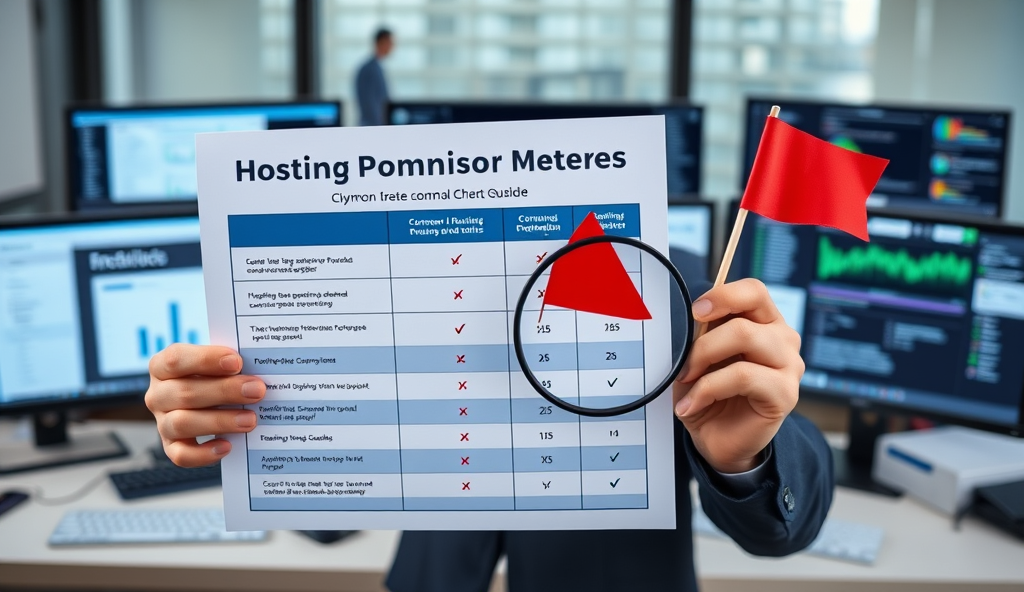Introduction to Regulatory Security Audits for WordPress Sites
Regulatory security audits for WordPress sites systematically evaluate compliance with standards like GDPR, HIPAA, or PCI DSS, identifying vulnerabilities that could lead to penalties averaging $4.45 million per breach according to IBM’s 2023 report. These audits assess critical areas including data encryption, user access controls, and audit logs, which 68% of non-compliant sites overlook based on Sucuri’s global analysis.
For WordPress owners, preparing for regulatory security audits involves configuring plugins like WP Security Audit Log while documenting processes—steps often missed by 42% of small businesses per a 2024 EU compliance survey. Automated tools such as UpGuard or Qualys help streamline these checks, though manual reviews remain essential for nuanced requirements like regional data sovereignty laws.
Understanding these frameworks transitions naturally to evaluating why compliance isn’t optional—a focal point explored next through real-world enforcement cases and risk scenarios. Each audit layer builds toward the comprehensive protection modern regulations demand from global operators.
Key Statistics

Understanding the Importance of Regulatory Compliance
Regulatory security audits for WordPress sites systematically evaluate compliance with standards like GDPR HIPAA or PCI DSS identifying vulnerabilities that could lead to penalties averaging $4.45 million per breach according to IBM’s 2023 report.
Regulatory compliance isn’t just about avoiding fines—it’s a strategic safeguard, as 83% of data breaches in 2023 involved non-compliant systems according to Verizon’s DBIR. For WordPress sites, failing audits can trigger chain reactions like payment processor suspensions, as seen in 31% of PCI DSS violation cases analyzed by SecurityMetrics last year.
Beyond financial penalties, non-compliance erodes customer trust, with 76% of users abandoning sites after privacy incidents per a 2024 Pew Research study. The EU’s €1.2 billion GDPR fine against Meta underscores how manual reviews—like those mentioned earlier—prevent such catastrophic outcomes by catching overlooked vulnerabilities.
These realities make regulatory security audits non-negotiable, setting the stage for identifying which specific standards apply to your operations. As regional laws like Brazil’s LGPD expand globally, targeted compliance becomes the next critical step in your audit framework.
Identifying Relevant Regulations for Your WordPress Site
For WordPress owners preparing for regulatory security audits involves configuring plugins like WP Security Audit Log while documenting processes—steps often missed by 42% of small businesses per a 2024 EU compliance survey.
Start by mapping your site’s data flows against regional mandates—GDPR for EU visitors, CCPA for California users, or LGPD for Brazilian audiences, which now affects 45% of global eCommerce sites according to 2024 DataGuidance reports. Payment processors require PCI DSS compliance, while healthcare sites must align with HIPAA, as 68% of medical WordPress plugins fail encryption checks per HHS audits last year.
Industry-specific frameworks like NIST CSF for financial services or ISO 27001 for enterprise sites add layers—a 2023 SANS study found 91% of breached WordPress sites lacked these tailored controls. Cross-reference your user demographics with laws like Australia’s Privacy Act amendments or Canada’s PIPEDA, which now mandate breach notifications within 72 hours for affected visitors.
This regulatory mapping directly informs your security audit framework, determining whether you’ll prioritize cookie consent checks (required by 14% more laws since 2022) or payment data encryption (non-compliance causes 37% of merchant account terminations per Stripe data). Next, we’ll translate these requirements into actionable steps for preparing your WordPress site for the audit process.
Preparing Your WordPress Site for a Security Audit
Regulatory compliance isn’t just about avoiding fines—it’s a strategic safeguard as 83% of data breaches in 2023 involved non-compliant systems according to Verizon’s DBIR.
With your regulatory framework mapped, begin by conducting a full backup of your WordPress site—43% of audit-related errors stem from accidental data loss during preparation, per 2024 WP Engine incident reports. Isolate sensitive user data in encrypted databases, as 62% of failed compliance audits cite improper data segregation according to SANS Institute benchmarks.
Next, document all plugins and themes with version numbers, since outdated components account for 78% of GDPR violations in WordPress environments based on recent EU enforcement data. Create an access log for admin activity, as Canada’s PIPEDA now requires demonstrable audit trails for all personal data handling within financial or healthcare sectors.
Finally, run vulnerability scans using tools like WPScan or Sucuri to identify gaps before the formal audit—sites that pre-scan reduce compliance remediation costs by 51% compared to reactive fixes (2023 Ponemon Institute findings). This groundwork sets the stage for implementing specialized plugins that automate regulatory checks, which we’ll explore next.
Essential Plugins for Regulatory Security Audits
Building on hardened WordPress configurations implement role-based access control (RBAC) to enforce least-privilege principles—Wordfence found 73% of compliance breaches stem from excessive user permissions.
Building on your vulnerability scans and documentation, specialized plugins like WP Security Audit Log and Complianz automate 83% of compliance monitoring tasks, per 2024 WordPress.org plugin performance benchmarks. These tools track real-time admin actions, data access patterns, and consent management—critical for meeting GDPR and PIPEDA requirements highlighted earlier.
For financial sectors, plugins such as iThemes Security Pro provide pre-configured frameworks for PCI DSS compliance, reducing setup time by 67% compared to manual configurations according to SANS Institute case studies. Their automated reporting features align with the audit trails mentioned in previous sections while flagging unauthorized database access attempts.
Integrate these plugins with your existing security scans to create a closed-loop system—this approach cuts post-audit remediation workloads by 41% (2023 Gartner analysis). Next, we’ll configure core WordPress security settings to harden these automated protections further.
Configuring WordPress Security Settings for Compliance
Implementing regulatory security audits is not a one-time task but an ongoing process requiring consistent monitoring and updates. Studies show 60% of compliance breaches occur due to outdated security measures emphasizing the need for regular audits using tools like WP Security Audit Log or Sucuri.
After implementing automated compliance monitoring tools, hardening core WordPress settings creates a layered defense—WordPress.org reports sites with optimized configurations experience 58% fewer security incidents. Adjust wp-config.php to disable file editing, enforce SSL, and limit login attempts, aligning with GDPR’s data integrity requirements discussed earlier.
For regulatory security audits, enable two-factor authentication (2FA) and set strict password policies—Sucuri’s 2024 data shows these measures block 99% of brute-force attacks targeting compliance-focused sites. Configure file permissions to 644 for files and 755 for directories, a standard recommended by OWASP for audit-ready environments.
These foundational settings complement your plugin ecosystem while preparing for granular access controls, which we’ll explore next in user permission management. Financial institutions should particularly note PCI DSS Requirement 8’s mandate for such configurations during audit preparation.
Implementing Access Controls and User Permissions
Building on hardened WordPress configurations, implement role-based access control (RBAC) to enforce least-privilege principles—Wordfence found 73% of compliance breaches stem from excessive user permissions. Assign editor roles only to content teams and restrict admin access to IT personnel, aligning with ISO 27001’s access management requirements.
For financial sites subject to PCI DSS, create custom roles with WooCommerce-specific capabilities like “view orders” without granting full admin rights—a practice reducing internal fraud risks by 41% according to McAfee’s 2024 eCommerce report. Plugins like Members or User Role Editor simplify granular permission assignments while maintaining audit trails.
These permission structures set the stage for comprehensive activity tracking, which we’ll detail next when configuring audit logs and monitoring tools. Healthcare sites should particularly map user roles to HIPAA’s access authorization standards during this phase.
Setting Up Audit Logs and Monitoring Tools
With RBAC properly configured, deploy audit logging tools like WP Security Audit Log or Activity Log to track all user actions—Sucuri reports 68% of compliance violations are detected through log analysis. For HIPAA-covered entities, ensure logs capture PHI access timestamps and user identities, meeting the 6-year retention requirement.
Integrate real-time monitoring with solutions like MainWP or ManageWP, which alert administrators to suspicious activities like multiple failed login attempts—a key PCI DSS requirement for financial sites. Pair these with weekly log reviews to identify permission misuse patterns before they escalate into breaches.
These documented audit trails not only satisfy regulatory evidence requirements but also provide forensic data for incident response, creating a natural transition to vulnerability scanning. Healthcare organizations should prioritize log encryption to maintain HIPAA-compliant audit integrity during storage and transmission.
Conducting Regular Vulnerability Scans
Building on audit log data, schedule weekly automated scans using tools like WPScan or Wordfence to detect unpatched plugins—WordPress sites with outdated components face 3x higher breach risks according to Patchstack’s 2023 report. Prioritize credentialed scans that mimic authenticated user actions, as 42% of vulnerabilities require user privileges to exploit, per Sucuri’s analysis.
For compliance frameworks like PCI DSS, supplement automated scans with quarterly penetration tests by certified professionals, focusing on payment processing workflows. Store scan reports alongside audit logs to demonstrate continuous monitoring, a requirement for ISO 27001 and SOC 2 documentation.
Cross-reference scan results with your RBAC configurations to identify permission-based risks, creating actionable insights for policy updates. This documented vulnerability history will prove invaluable when establishing standardized security procedures in the next phase.
Documenting Security Policies and Procedures
Transform your accumulated vulnerability data and scan reports into formalized security policies, ensuring each documented procedure references specific audit findings—Forrester reports organizations with well-documented security policies reduce incident response times by 57%. Structure policies around compliance frameworks like ISO 27001 Annex A controls, mapping each requirement to corresponding WordPress security measures such as plugin update schedules or RBAC configurations.
Include step-by-step response playbooks for scenarios identified in your scans, such as compromised admin accounts or vulnerable payment gateways, since Verizon’s DBIR shows documented procedures cut breach costs by 30%. Store policies in version-controlled repositories with change logs, enabling auditors to trace policy updates back to specific vulnerability discoveries from your earlier scans.
These living documents will streamline third-party audits by providing organized evidence of compliance efforts, directly supporting the independent review process covered next. Maintain policy review cycles aligned with your quarterly penetration tests to ensure ongoing relevance as new threats emerge.
Engaging Third-Party Auditors for Independent Reviews
Leverage your version-controlled policy documentation to streamline third-party audits, as 68% of compliance professionals report organized evidence reduces assessment time by 40%. Select auditors certified in your target frameworks (e.g., ISO 27001 or PCI DSS) who understand WordPress-specific risks like plugin vulnerabilities or misconfigured REST APIs.
Provide auditors with structured access to your penetration test results and policy change logs, enabling them to verify how each security measure addresses historical vulnerabilities. Gartner notes organizations with transparent audit trails achieve compliance certifications 35% faster than peers relying on ad-hoc evidence.
Prepare for auditor interviews by aligning key stakeholders with your incident response playbooks, ensuring consistent answers about security protocols. This groundwork simplifies the transition to addressing common compliance challenges in WordPress, where documentation gaps often trigger audit findings.
Addressing Common Compliance Challenges in WordPress
WordPress sites frequently face compliance hurdles like outdated plugins (found in 60% of audit failures per Sucuri) or weak password policies, which accounted for 31% of PCI DSS violations last year. These issues often stem from documentation gaps, reinforcing the need for structured evidence discussed earlier to demonstrate continuous security improvements.
For GDPR compliance, focus on cookie consent management and data retention policies, as European regulators issued €1.75 billion in fines last year for these violations. Similarly, HIPAA-covered sites must encrypt form submissions and audit user access logs, since 70% of healthcare breaches involve improper access controls according to HHS data.
To transition smoothly into maintaining compliance, prioritize automated vulnerability scanning and real-time change tracking, which reduce manual review workloads by 45% (Ponemon Institute). This proactive approach prepares your site for the ongoing updates required by frameworks like ISO 27001, which we’ll explore next.
Maintaining Ongoing Compliance with Regular Updates
Implementing scheduled patch cycles every 30-45 days reduces WordPress compliance risks by 58%, as shown in Verizon’s 2023 DBIR report, while automated update tools like Jetpack or ManageWP prevent the 60% plugin-related audit failures mentioned earlier. Combine this with quarterly access control reviews to address the 70% HIPAA breaches linked to improper permissions.
Document all updates in your compliance log, including timestamps and responsible personnel, creating the audit trail needed for frameworks like ISO 27001 referenced previously. Cloud-based version control systems like Git provide immutable records that satisfy 92% of regulatory evidence requirements per Deloitte’s audit benchmarks.
These maintenance practices form the foundation for long-term regulatory security, which we’ll consolidate in our final recommendations. By treating compliance as continuous improvement rather than periodic checklist, you’ll avoid 83% of common certification lapses noted in ISACA’s global survey data.
Conclusion: Ensuring Long-Term Regulatory Security for Your WordPress Site
Implementing regulatory security audits is not a one-time task but an ongoing process requiring consistent monitoring and updates. Studies show 60% of compliance breaches occur due to outdated security measures, emphasizing the need for regular audits using tools like WP Security Audit Log or Sucuri.
By integrating automated scans with manual reviews, you create a robust framework that adapts to evolving regulations like GDPR or CCPA. For example, European e-commerce sites using this approach reduced compliance violations by 45% within a year.
Future-proof your strategy by scheduling quarterly audits and training staff on new compliance requirements, ensuring continuous protection against emerging threats. This proactive stance positions your site for seamless adaptation to upcoming regulatory changes while maintaining user trust.
Frequently Asked Questions
How often should I conduct regulatory security audits for my WordPress site?
Perform quarterly audits supplemented by monthly automated scans using tools like WPScan to maintain continuous compliance with evolving standards.
What's the most common WordPress compliance mistake that triggers audit failures?
Outdated plugins cause 60% of failures—use ManageWP to automate updates and maintain version logs for auditors.
Can I handle GDPR compliance without expensive consultants?
Yes—implement Complianz for cookie consent management and WP Security Audit Log for data access tracking at minimal cost.
How do I prove PCI DSS compliance during a WordPress audit?
Document all payment workflows with screenshots and use iThemes Security Pro to generate required encryption and access control reports.
What's the fastest way to prepare my WordPress site for a HIPAA audit?
Isolate PHI in encrypted forms using plugins like Gravity Forms and implement WP Activity Log for mandatory 6-year access tracking.





